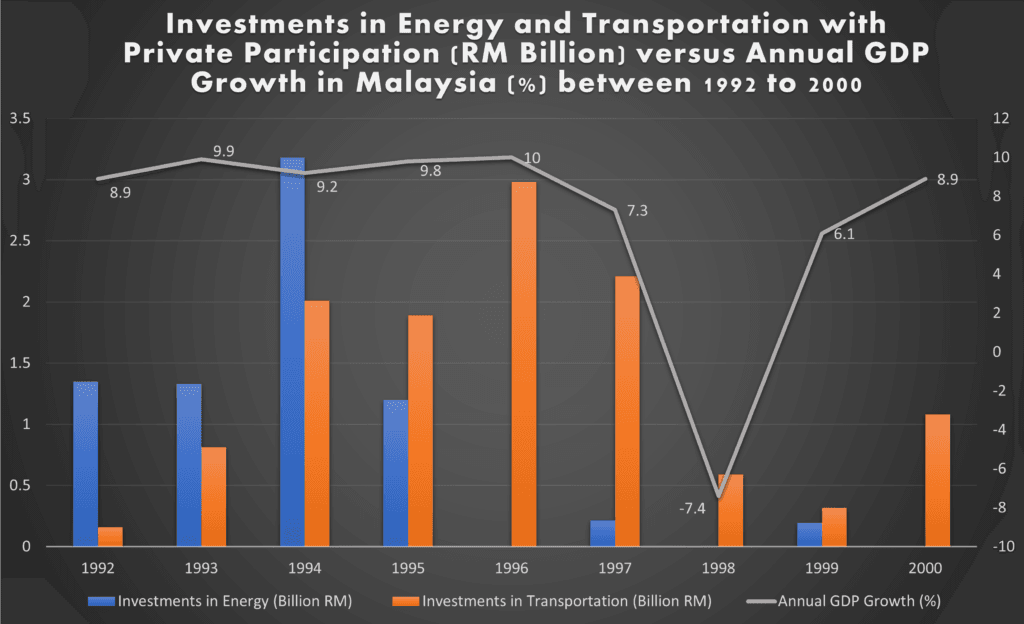Malaysia is rapidly expanding its infrastructure, with extensive projects in transportation, renewable energy, and industrial development. These initiatives aim to boost the nation’s economic growth and create jobs. Furthermore, they also provide a solid foundation for sustainable development, attracting investors both locally and internationally. Let’s take a look at the Infrastructure Investments Malaysia below!
Infrastructure Investments Malaysia in Industrial Estates
Malaysia has over 600 industrial estates, offering world-class infrastructure across a variety of industries. These estates are designed to meet the needs of specialized sectors like biotechnology, halal products, and research and development. Parks like the Kulim Hi-Tech Park, Batu Kawan Industrial Park, and i-Park Johor are transforming the landscape with modern, “industrial resort” concepts. It then will integrate shopping centers, hospitals, educational facilities, and recreation. These setups attract foreign Infrastructure Investments Malaysia to support the country’s goal of becoming a sustainable industrial powerhouse.
High-Speed Rail: Linking Malaysia and Singapore
A major highlight of Malaysia’s transport development is the high-speed rail (HSR) project, which aims to connect Kuala Lumpur and Singapore. This 350-km line would reduce travel time to just 90 minutes, linking key cities such as Putra Jaya, Melaka, and Johor.
Although initially shelved due to cost concerns, the project gained renewed attention in 2023 with new Infrastructure Investments Malaysia. The project becomes a public-private partnership, marking it as a transformative infrastructure effort. Once finalized, it promises to boost connectivity and generate new job opportunities. This is especially for civil engineers and planning specialists, which will also bolster Malaysia’s construction workforce.
Infrastructure Investments Malaysia for MRT 3
The MRT 3 project, or Circle Line, is another critical transport project aimed at strengthening public transit around the Klang Valley. This 51-km transit network will feature 24 elevated and seven underground stations, bridging key areas around the Kuala Lumpur region.
Set to start in 2024, the MRT 3 is part of a broader initiative to reduce traffic congestion and make urban mobility easier and faster. With an estimated RM31 billion in costs, this project represents a significant Infrastructure Investments Malaysia that is expected to bring thousands of jobs. Notably for construction and civil engineering professionals.
Modernizing Transport on the Island with Penang LRT
Penang’s Bayan Lepas Light Rail Transit (LRT) system is another ambitious venture designed to enhance connectivity on the island. The LRT will span from Georgetown’s Komtar area to Bayan Lepas, integrating 27 stations, including one that will eventually link to mainland Malaysia. With construction resuming in 2024, the Penang LRT is set to meet the region’s rising transportation demands and support local industries. It’s offering improved urban mobility for residents and visitors as a result of working Infrastructure Investments Malaysia.
Renewable Energy Projects for a Greener Future
Under Malaysia’s Twelfth Malaysia Plan (2021-2025), the country is committed to achieving net-zero emissions by 2050. To reach this target, Malaysia is increasing its renewable energy capacity. In 2022, it was at 25%, with ambitions to reach 75% by 2050. Major renewable energy initiatives include the Nenggiri hydroelectric dam, expected to be completed by 2027, and the National Energy Transition Roadmap (NETR). These two align with Malaysia’s goals for a greener future.
Infrastructure Investments Malaysia in this sector could add approximately RM220 billion to Malaysia’s GDP and create around 310,000 green jobs. Thus, the country can benefit from renewable energy, as a key pillar of the nation’s economic strategy.
Construction Growth: A Promising Outlook for 2024 and Beyond

Infrastructure Investments Malaysia in transportation and renewable energy have positively impacted the nation’s construction industry. In the first half of 2024, construction grew by 14.6% year-on-year. The trend is expected to continue with an annual growth rate of 7.4%. The Malaysian government has approved MYR83.7 billion worth of projects, 13% higher than the same period in 2023, signaling strong investor confidence. This expansion, supported by both domestic and foreign investments, aligns with Malaysia’s vision for a robust and sustainable economy.
Malaysia’s large-scale infrastructure projects, spanning from high-speed rail to renewable energy, are transforming the nation into a modern, sustainable economy. These Infrastructure Investments Malaysia are driving the construction sector, providing new employment opportunities, and contributing to economic resilience. Through this balanced approach to development, Malaysia is setting itself apart as a regional leader in infrastructure, innovation, and sustainable growth.

